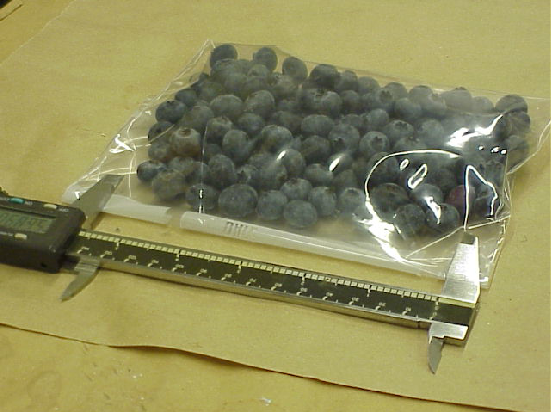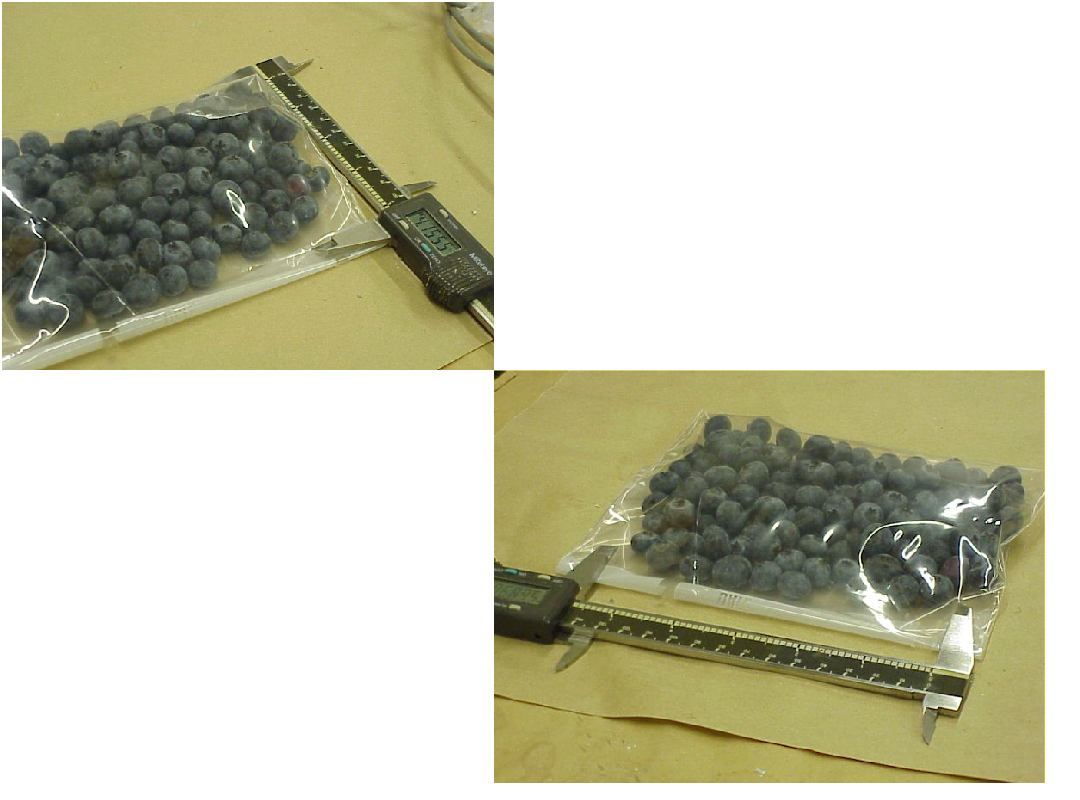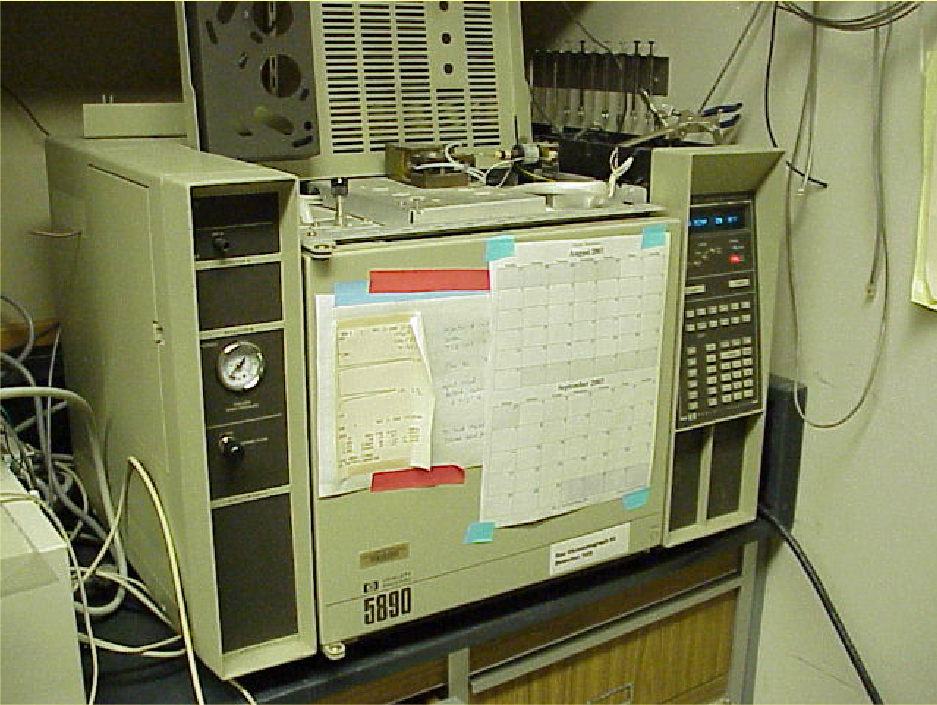Goal: When you have finished this laboratory exercise you will understand
- the design considerations in modified atmosphere packages
and you will learn
- how carbon dioxide and oxygen concentrations change in modified atmosphere packages
- the role of product's respiration rates on the internal atmosphere of a modified atmosphere package
- the effect of product mass on internal atmosphere of a package
-
Modified atmosphere packaging of fruits and vegetables is useful in extending the shelf life of packaged products. Even short extension of shelf life of some commodities is sometimes sufficient to gain market share at distant locations. New developments in packaging materials have made it possible to design modified atmosphere systems for a variety of fruits and vegetables. MAP is also being commercially used to package pasta as shown below.

-
In a laboratory experiment on MAP, we will use blueberries in a polymeric package. the procedure is as follows:
1) Place a certain mass of blueberries in a modified atmosphere package and seal the package to prevent any leakage of gases.
-
2) Measure the surface area of the package.

-
3) Using a gas chromatograph, determine the gas concentrations in the package at periodic intervals.

-
For the virtual experiment, two different packaging materials (Orega, Clean-plas) are available; investigate different storage temperatures and product weights. Results include the free volume in the package, and the change in oxygen and carbon dioxide concentrations in the package.
-
Fruits and vegetables continue to respire after harvest. The respiration process involves oxidation of glucose, generating carbon dioxide and water. The rate of reaction is described by a Michaelis-Menten type model. The rate equations are used in determining oxygen and carbon dioxide content in a package atmosphere. The respiration rate of a product inside the package is influenced by the storage temperature and product mass.
Operator's Panel
Virtual Experiment
-
In this experiment, you obtained data on gas concentrations with time for different storage temperatures, product mass, packaging film and surface area of the package. Using these data, create plots of gas concentrations for the different design variables.
- Discuss how the respiration rate changes with different storage temperatures.
- Discuss the effect of the type of packaging material on the respiration rate.
- What is the role of product weight (and the free volume inside the package) on the respiration rate?
- Mannapperuma, J. and Singh R.P. (1994). Modeling of gas exchange in polymeric packaging of fresh fruits and vegetables. In: Minimal Processing of Foods and Process Optimization: An Interface., Edited By Singh, R.P. and Oliveira, F.A.R. CRC Press, Boca Raton.
- Song, Y., Vorsa, N. and Yam, K.L. (2002). Modeling respiration-transpiration in a modified atmosphere packaging system containing blueberry. J. Food Eng. 53: 103-109.